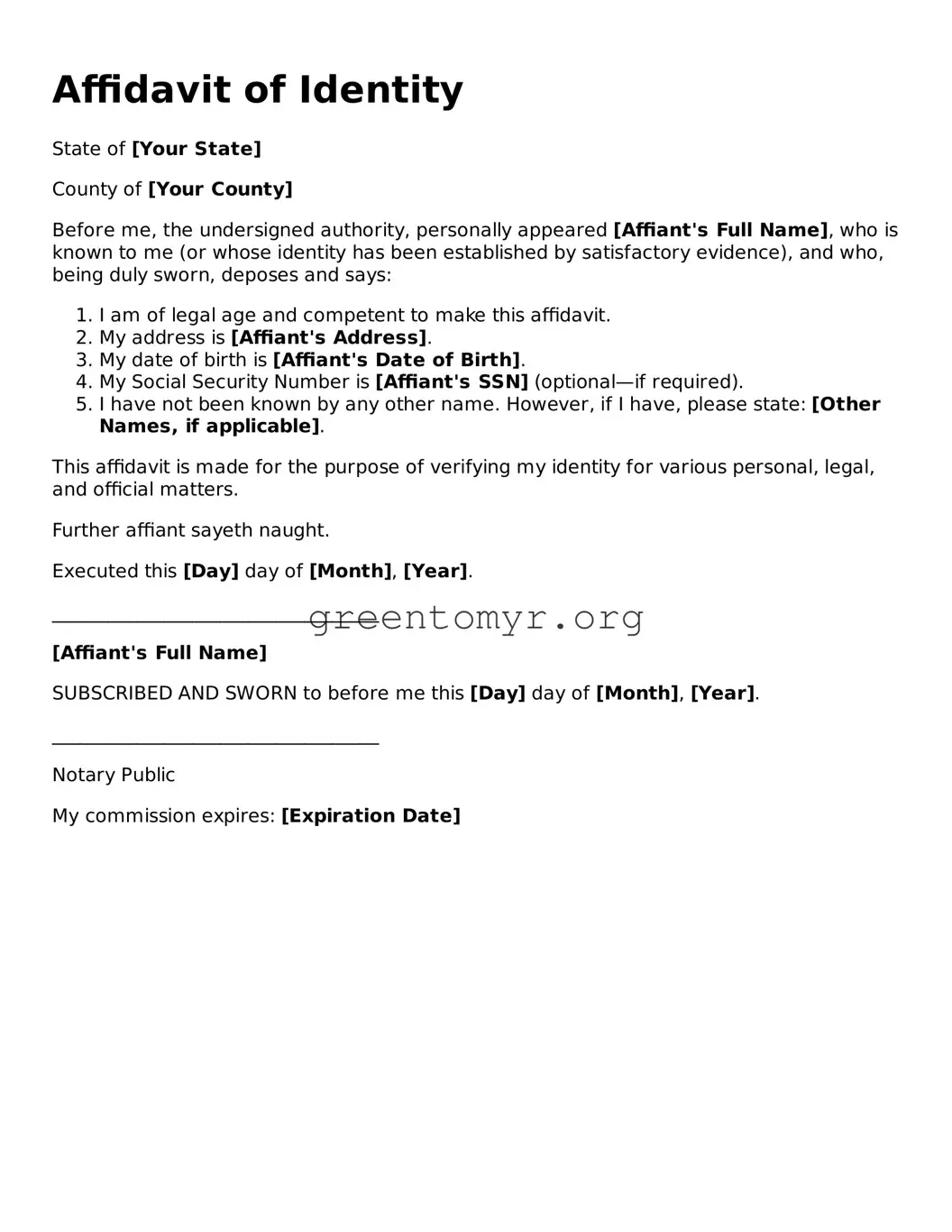Affidavit of Identity
State of [Your State]
County of [Your County]
Before me, the undersigned authority, personally appeared [Affiant's Full Name], who is known to me (or whose identity has been established by satisfactory evidence), and who, being duly sworn, deposes and says:
- I am of legal age and competent to make this affidavit.
- My address is [Affiant's Address].
- My date of birth is [Affiant's Date of Birth].
- My Social Security Number is [Affiant's SSN] (optional—if required).
- I have not been known by any other name. However, if I have, please state: [Other Names, if applicable].
This affidavit is made for the purpose of verifying my identity for various personal, legal, and official matters.
Further affiant sayeth naught.
Executed this [Day] day of [Month], [Year].
___________________________________
[Affiant's Full Name]
SUBSCRIBED AND SWORN to before me this [Day] day of [Month], [Year].
___________________________________
Notary Public
My commission expires: [Expiration Date]
